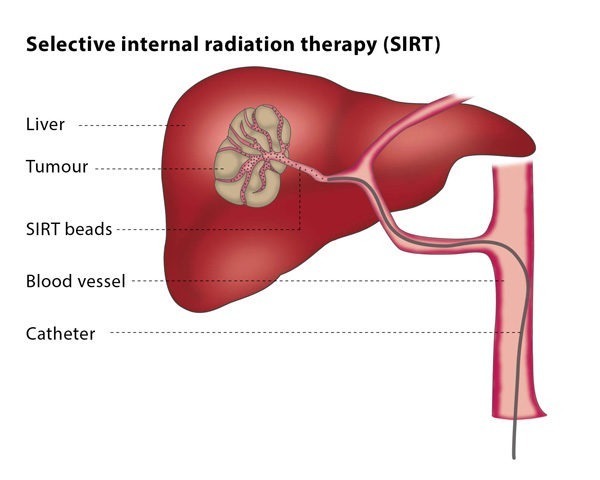What is SIRT?
SIRT is a radiation treatment for cancer. In this procedure, a radiation source called yttrium-90 is administered in small beads delivered through the blood stream into the organ affected by cancer.
How does the procedure work?
First the interventional radiologist will map out the blood vessels of the organ, and may block some of them to ensure the spheres only go to the tumour. Once this is done, a catheter (small tube) is placed inside a blood vessel that goes directly to the organ affected by cancer. The interventional radiologist will guide the catheter close to the tumour and then will administer the specially prepared beads that contain the radiation. When the beads land in the tumour, they emit a form of radiation energy that kills the cancer cells over a short distance around the bead.

